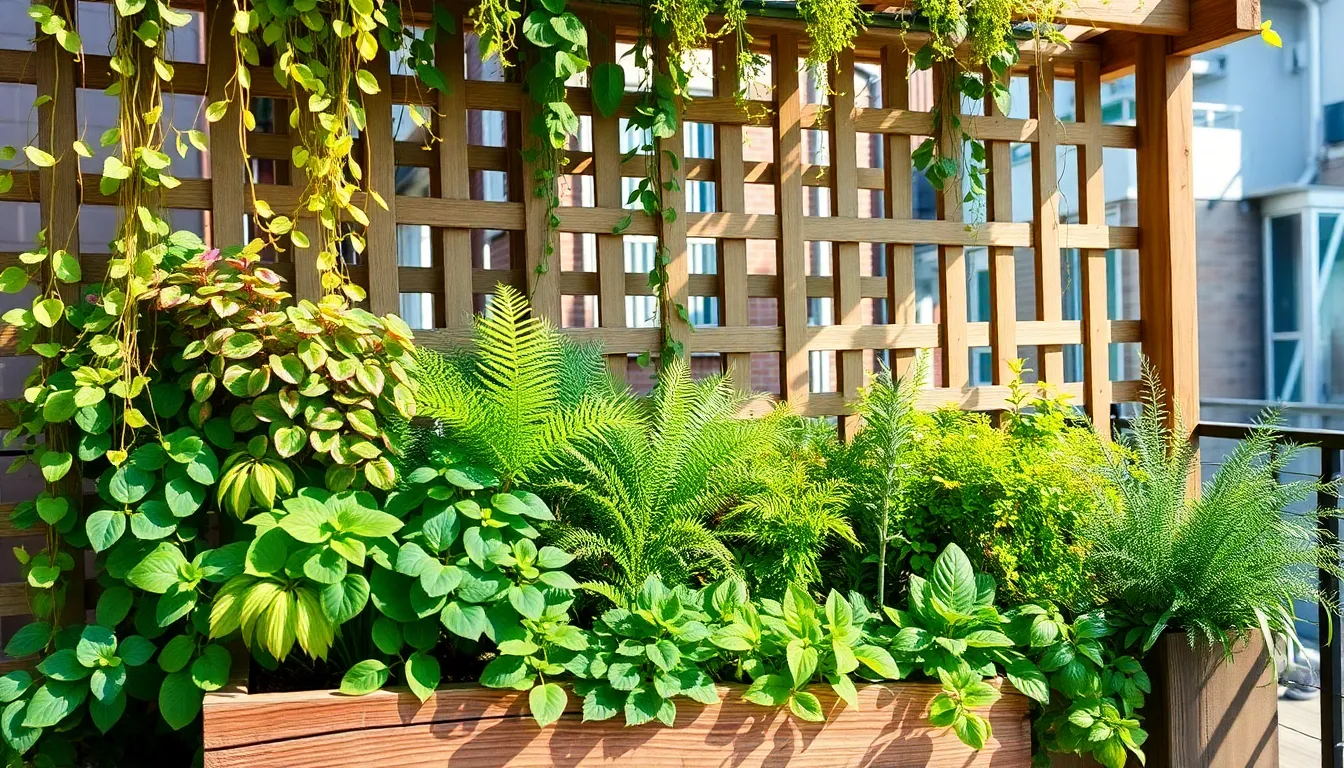Welcome to the world of vertical gardening, where every inch of space can bloom with life and color, transforming even the smallest of areas into lush, green sanctuaries. Whether you’re just starting out on your gardening journey or have been tending to plants for years, this guide offers a vibrant tapestry of tips designed to elevate your gardening experience—literally! The beauty of vertical gardens is their ability to bring the wonder of the outdoors into our lives, no matter how limited your space might be. Our curated list of garden designs is your key to unlocking new dimensions of creativity and practicality, allowing you to cultivate a thriving oasis that climbs towards the sky.
In this guide, you’ll discover the joy of maximizing your growing potential, turning the constraints of space into opportunities for innovation and abundance. From the practical benefits of increased yield and improved air circulation to the sheer delight of watching your vertical masterpiece take shape, each tip is crafted to empower you with the confidence and knowledge to succeed. With enthusiasm and expertise, we’re here to guide you in creating vertical gardens that not only beautify your environment but also enrich your gardening skills and satisfaction. So, let’s embark on this green adventure together, where every plant and every technique is a step towards a more verdant, rewarding life.
Choose Lightweight Plant Containers

When growing a vertical garden, choosing lightweight plant containers is crucial for ease of installation and maintenance. Opt for materials like plastic, fiberglass, or fabric, which are not only light but also durable and weather-resistant.
Ensure that your containers have adequate drainage holes to prevent waterlogging, a common issue in vertical gardens. For beginners, using a mix of peat-based potting soil with added perlite can help improve drainage while retaining necessary moisture.
Consider the weight of the soil and plants when fully saturated with water, as this can significantly impact the overall load on your vertical structure. Advanced gardeners might experiment with soil-less media like coco coir to further reduce weight while providing excellent aeration and moisture retention.
For those incorporating a watering system, using self-watering containers can minimize maintenance and ensure consistent hydration. This is especially beneficial for vertical gardens placed in hard-to-reach areas, reducing the need for frequent manual watering.
Install Sturdy Support Structures
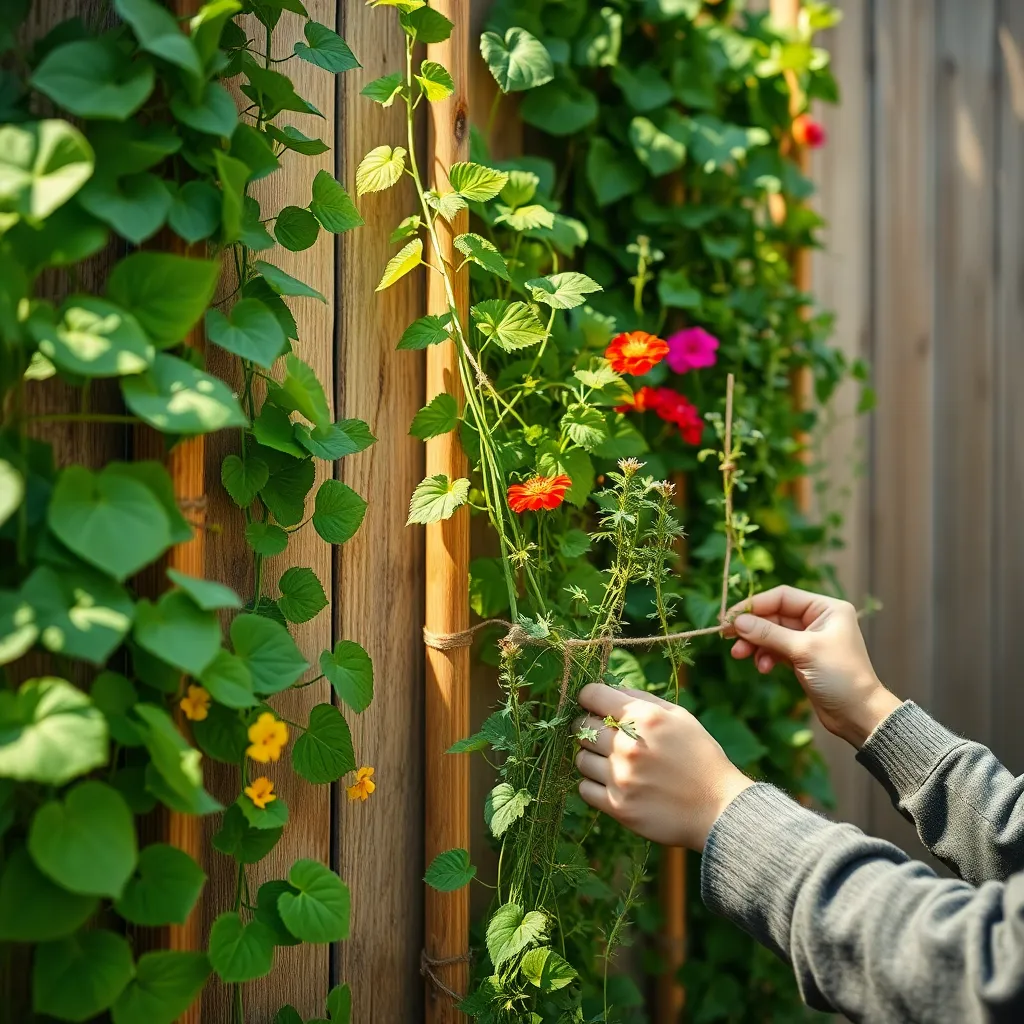
When building a vertical garden, installing sturdy support structures is crucial for success. These structures must be able to hold the weight of your plants and containers, especially as they grow and mature.
Begin by selecting materials that are durable and weather-resistant, such as galvanized metal, treated wood, or heavy-duty plastic. Ensure the support structure is anchored securely to prevent it from toppling over in strong winds or under the weight of your plants.
For vining plants like tomatoes, cucumbers, or beans, consider using trellises or lattice panels. These supports not only offer stability but also promote healthy growth by allowing plants to climb naturally.
For gardeners who want to grow heavier produce, such as pumpkins or gourds, opt for reinforced structures like metal cages or grids. Advanced gardeners might explore using tension cables or wire mesh for additional support tailored to specific plant needs.
Regardless of your chosen materials, regular maintenance is key to ensuring the longevity and effectiveness of your supports. Check for rust, rot, or wear periodically, and make necessary repairs or replacements to keep your vertical garden thriving.
Select Vertical-Friendly Plant Varieties
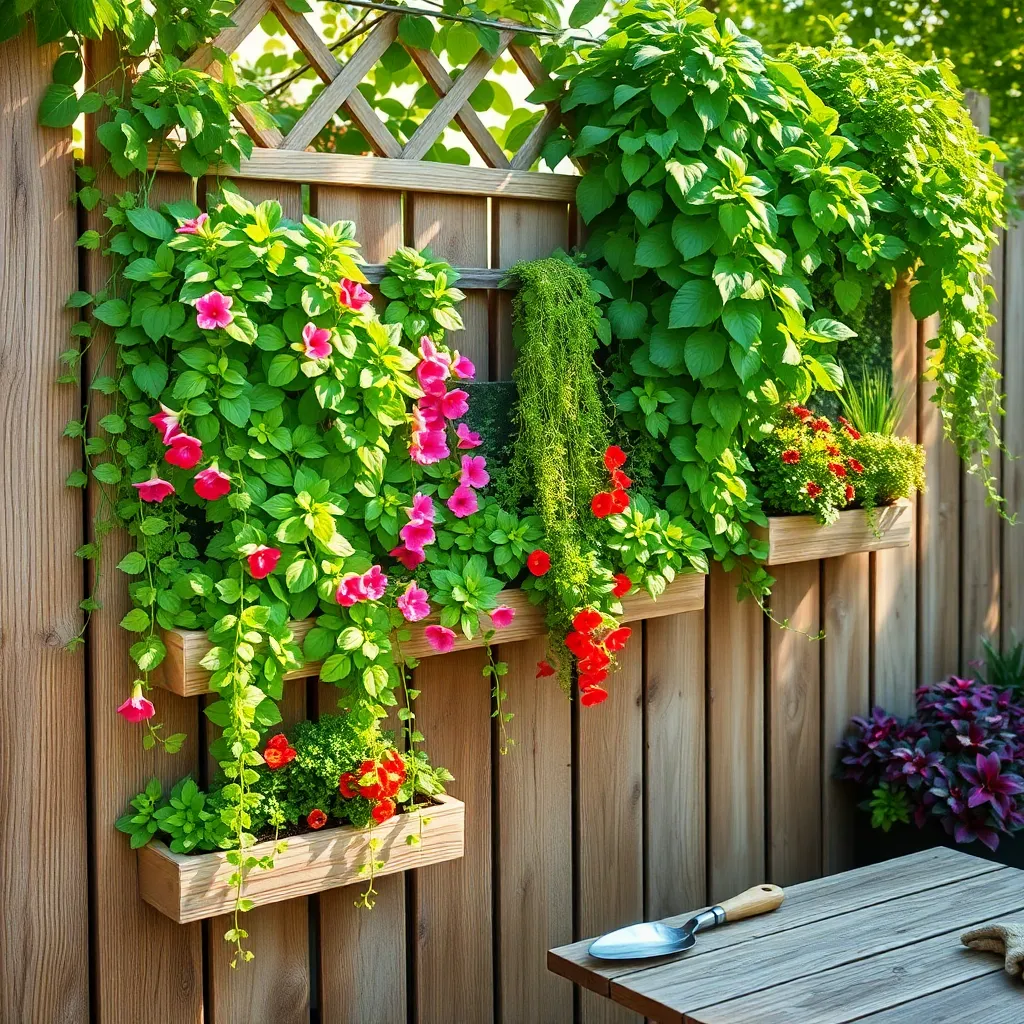
When choosing plants for your vertical garden, opt for varieties that naturally climb or trail. Vining plants like peas and beans are excellent choices, as they can easily be trained to follow the support structures you’ve installed.
Consider using plants with shallow root systems, as they are well-suited for vertical gardening. Herbs such as thyme and oregano fit this category perfectly, thriving in smaller soil spaces while providing aromatic benefits.
For a colorful display, select flowering vines like clematis or morning glories, which can add vibrant hues to your vertical space. Ensure these plants get adequate sunlight, typically around 6 to 8 hours per day, to encourage abundant blooms.
Incorporate a variety of textures by mixing in plants such as ferns or lettuce that offer lush foliage. Regularly check their moisture levels, as vertical gardens tend to dry out more quickly, necessitating more frequent watering.
Ensure Adequate Sunlight Exposure
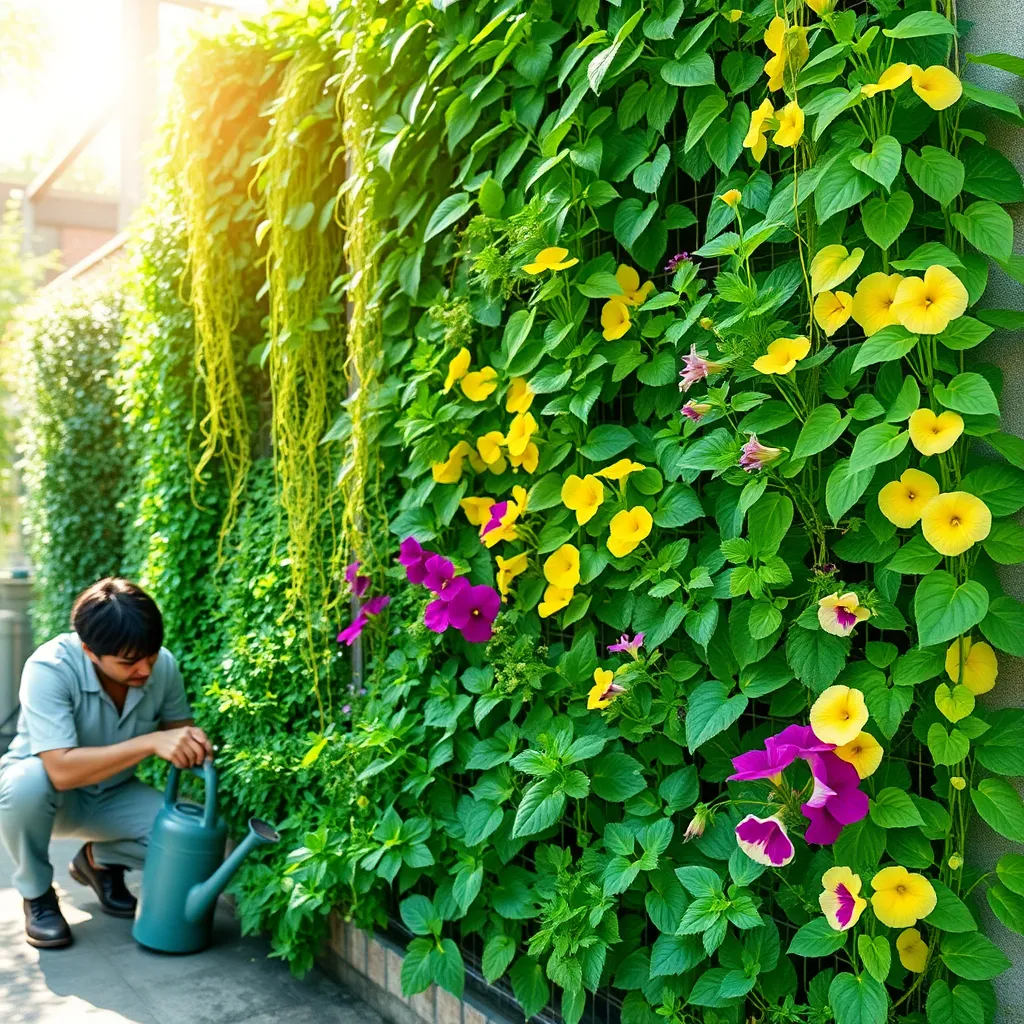
Ensuring adequate sunlight exposure is crucial for the success of your vertical garden. Most plants require at least six hours of direct sunlight daily, so positioning your garden in the right spot is key.
Consider the orientation of your garden to maximize sunlight exposure. South-facing walls are ideal for vertical gardens as they receive the most consistent sunlight throughout the day.
If a south-facing spot isn’t available, try to locate your garden where it can still catch the morning sun. Morning sunlight is less intense and can help reduce the risk of scorching your plants.
For gardeners dealing with limited sunlight, choosing shade-tolerant plants is a smart strategy. Varieties like ferns, hostas, and certain types of lettuce thrive with less direct light and can add diversity to your vertical garden.
Implement Efficient Watering Systems
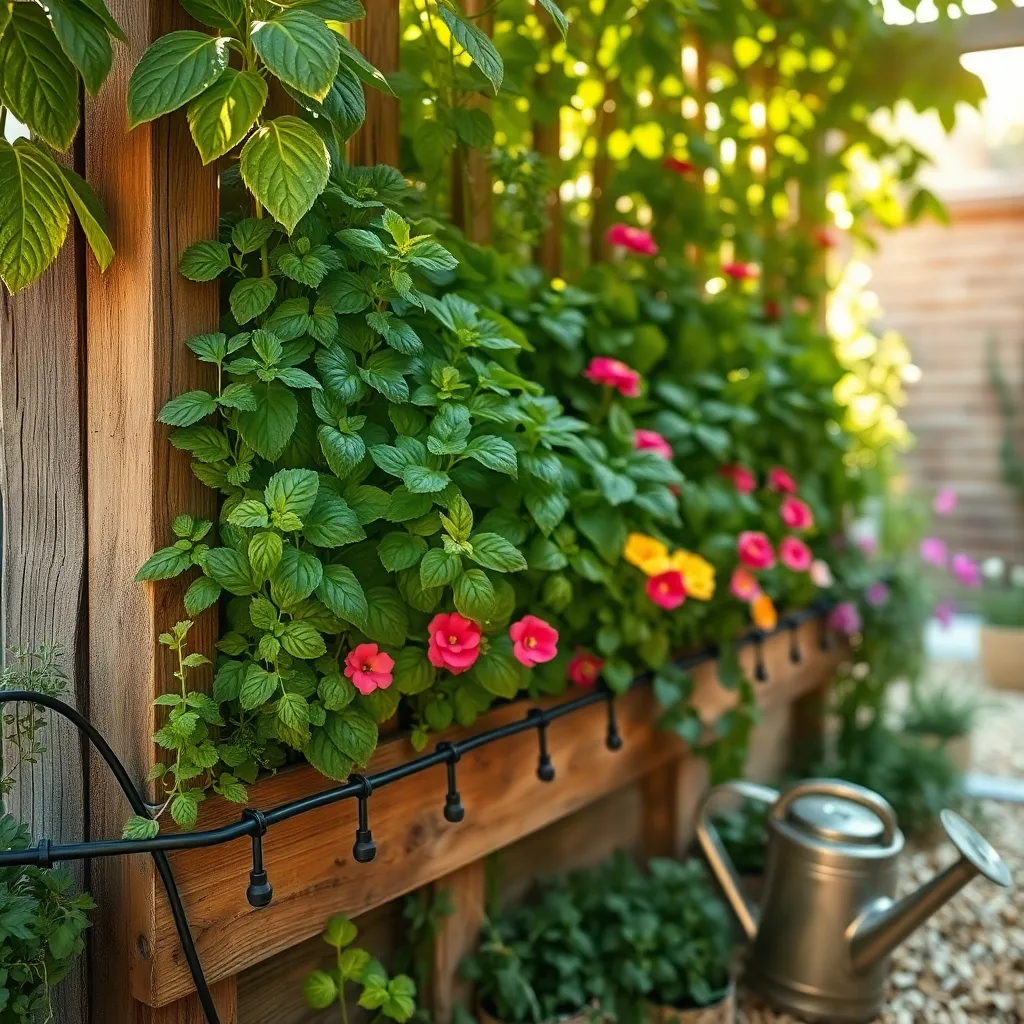
Watering is a crucial aspect of maintaining a thriving vertical garden, and implementing efficient systems can make all the difference. For beginners, drip irrigation systems are highly recommended as they provide consistent moisture with minimal water waste.
Consider installing a soaker hose if your vertical garden spans a larger area. This method is effective for ensuring even water distribution, especially for walls densely packed with plants.
Advanced gardeners might explore automatic timers to control watering schedules, ensuring plants receive optimal hydration without the guesswork. This automation helps maintain a routine, crucial for plants sensitive to overwatering or drought.
If you’re growing plants with varying water needs, such as succulents mixed with herbs, customize your system to meet these requirements. Segmented watering zones can be created within your vertical structure to cater to different hydration needs effectively.
Conclusion: Growing Success with These Plants
In nurturing your vertical garden of relationships, we unearthed five essential concepts: communication, trust, mutual support, quality time, and adaptability. Just as plants reach for the sky, your relationships can thrive by fostering open dialogue and trust, supporting each other’s growth, investing time, and being flexible as life changes. These foundational elements cultivate a robust and enduring partnership.
As a first step toward flourishing relationships, engage in a heartfelt conversation with someone you value, focusing on a shared goal or dream. This simple action can reinforce your connection and set the stage for future growth.
Remember, every great relationship requires ongoing care and attention. Bookmark this article as your go-to guide, ensuring you have these tips at your fingertips whenever you need a gentle reminder on nurturing your connections.
Looking ahead, envision the success of your relationships, knowing that with commitment and effort, they can blossom beautifully over time. Embrace these insights with optimism and watch your relationships grow stronger and more fulfilling. You have the tools and the wisdom; now it’s time to cultivate the bonds that matter most.

